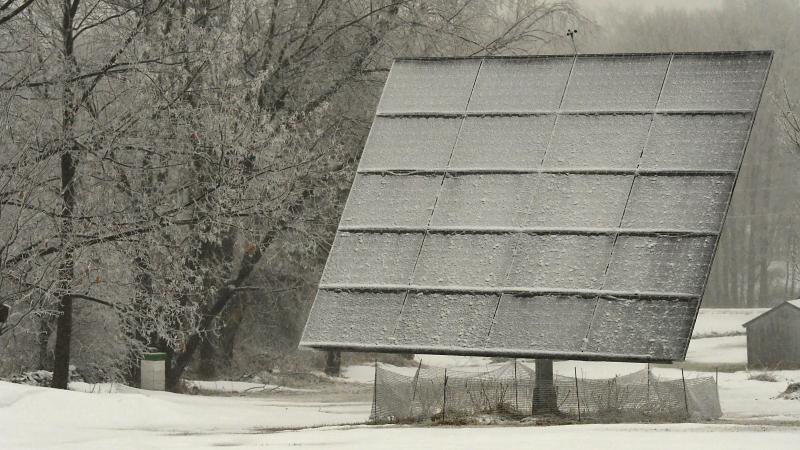EPA’s new rules on power plant emissions may be worse than originally thought, new analysis shows
As a result of flawed assumptions in the EPA's analysis of the impacts of its power plant rules, 5.2 million people in the center of America could be sitting in the dark when they need energy the most.
Critics of the Environmental Protection Agency’s power plant rules, which were finalized in April, warned that the rules would shut down coal-fired power plants and discourage investments in new gas plants to replace them, which would undermine grid reliability.
A new analysis shows that the rules could be more impactful than thought. Energy analysts Isaac Orr and Mitch Rolling, who publish their analyses on their “Energy Bad Boys” Substack, estimate that 5.2 million people served by the Southwest Power Pool (SPP), an area covering much of the Great Plains, could experience blackouts during periods of peak demand, which includes heat waves and cold snaps.
Gross Negligence
Rolling and Orr explain that the EPA performed a regulatory impact analysis for its power plant rules, as all federal agencies adopting new regulations do, but that analysis has some flaws.
The North Dakota Transmission Authority, which oversees development of transmission infrastructure in North Dakota, hired Rolling and Orr to model the reliability and cost impacts of the EPA’s rules in the SPP, which is a regional transmission organization (RTO). These entities coordinate electricity delivery over a multi-state electric grid. The area served by SPP stretches from the U.S.-Canadian border down through the Great Plains to Oklahoma and the Texas panhandle.
In analyzing its regulatory impact, the EPA doesn’t perform a reliability assessment. Instead, it goes by a resource adequacy analysis, which the agency has stated isn’t adequate for measuring regulatory impacts on grid reliability. That resource adequacy analysis estimates all generation sources’ capacity to provide power when it’s needed the most. All the resources’ capacity are then added together until the EPA can meet projected demand in a region and a reserve margin.
Such an analysis works fairly well with generation sources that aren’t dependent on the right weather conditions, as is the case with wind and solar. Dispatchable sources powered by coal, natural gas or nuclear can be expected to be available as needed, in most cases, whereas intermittent wind and solar generation may or may not.
Besides the problems with a resource adequacy analysis, in their assessment of the EPA rules on the SPP, Rolling and Orr found the assumptions the EPA uses in the resource adequacy analysis are “so shockingly unrealistic that they border on gross negligence.” The EPA estimates that solar resources in the SPP range from 80% to 100%.
This “may be the most irresponsible assumption in an energy model we have ever seen,” the analysts write.
This means the EPA expects the SPP region to rely on solar resources being available nearly all the time, which is, of course, impossible due to the rotation of the Earth and cloud cover. Mitch and Rolling say the EPA also gives generous assumptions to wind power, as well as natural gas and coal resources, which the EPA assumes will be available 100% of the time. While thermal resources don’t require ideal weather conditions to produce electricity, they have maintenance and some unplanned outages.
As a result of these flawed assumptions, the pair conclude, 5.2 million people in the SPP could be sitting in the dark when they need energy the most.
Demand growth
Rolling’s and Orr’s estimation of resource inadequacy doesn’t factor in increases in demand resulting from data centers, adoption of electric vehicles, and transitions from gas-power to electric appliances.
“Had the EPA factored in load growth stemming from EVs and data centers, electricity demand would’ve been much higher,” Rolling told Just the News.
The EPA, he said, would have built in more capacity to meet that demand, but considering how it overestimates the ability of wind and solar to meet demand, blackouts would be more likely with that increased demand factored in, Rolling said. However, the EPA actually lowered demand projections in its final rule compared to the proposed rule.
“Given that load growth projections have only increased since the Proposed Rule was released in 2023, there is no basis for this downward revision,” Rolling said.
Assumptions
The EPA’s resource adequacy analysis is not the only aspect of the power plant rules that people have found to be full of questionable assumptions.
Sen. Shelley Capito, R-W.V., questioned EPA Administrator Michael Regan about the rules at a Senate Environment and Public Works Committee hearing earlier this month. Capito pointed out that operators of coal-fired power plants will not be able to afford to implement the carbon capture and sequestration technologies the rules demand, which will force them to shut the resources down.
Capito asked Regan if any power plant operating in the U.S. can meet the 90% carbon capture standards the new rules require, and he replied that he believes that, while many were already planned to be retired for a transition to natural gas, some coal plants will take advantage of the technology. He said some utilities are taking advantage of taxpayer subsidies to pursue implementation of the technologies. He was not, however, able to state that any such plants currently exist.
Capito also asked about the expensive legal difficulties in permitting pipelines, which will be needed to scale up carbon capture to meet the EPA’s new standards.
“How in the world can you say that we’re going to CCUS [carbon capture and underground storage] — we’re going to build pipelines that carry carbon?”
Regan said that it was already happening, but when Capito challenged Regan to point to an interstate carbon pipeline currently in operation, he was unable to point to one.
Magical thinking
Rolling said he’s seen other examples of unreasonable assumptions in the pursuit of green energy. One is the expectation that demand can be altered to change consumption patterns to be more in line with times wind and solar are producing electricity, often called demand response.
“For this to work, however, assumes that consumers will play along, which likely won’t be the case because they have come to expect available electricity no matter what,” Rolling said.
This is already being deployed in Texas and California with conservation notices, Rolling said, and there are incentive programs to encourage people to reduce their electricity use during peak periods, which is basically paying people not to use electricity. Using generous availability of demand response in his and Orr’s analyses, Rolling said, they still found blackouts likely.
“Requiring consumers to use electricity when the wind is blowing and sun is shining simply isn’t realistic or fair to consumers,” Rolling said.
The other example of unreasonable expectations of green energy proponents, Rolling said, is hydrogen peaker plants. These are plants that burn hydrogen, which produces no carbon dioxide emissions, when wind and solar resources are low. The problem is that these plants are prohibitively expensive.
“None of this has stopped grid planners from incorporating hydrogen peaker plants into their modeling, however, who are running on faith and continue to shut down coal and nuclear plants with the hopes that these ideas will somehow magically make sense in the next 5 to 15 years,” Rolling said.
The EPA’s rules are facing legal challenges, but should those not succeed, the EPA’s flawed assumptions may come to light when the lights go out.
The Facts Inside Our Reporter's Notebook
Links
- Environmental Protection Agencyâs power plant rules
- which would undermine grid reliability
- Energy Bad Boys
- 5.2 million people served by the Southwest Power Pool
- regulatory impact analysis
- North Dakota Transmission Authority
- area served by SPP
- measuring regulatory impacts on grid reliability
- resulting from data centers
- adoption of electric vehicles
- only increased
- questioned EPA Administrator Michaeal Regan
- often called demand response
- conservation notices
- plants are prohibitively expensive
















